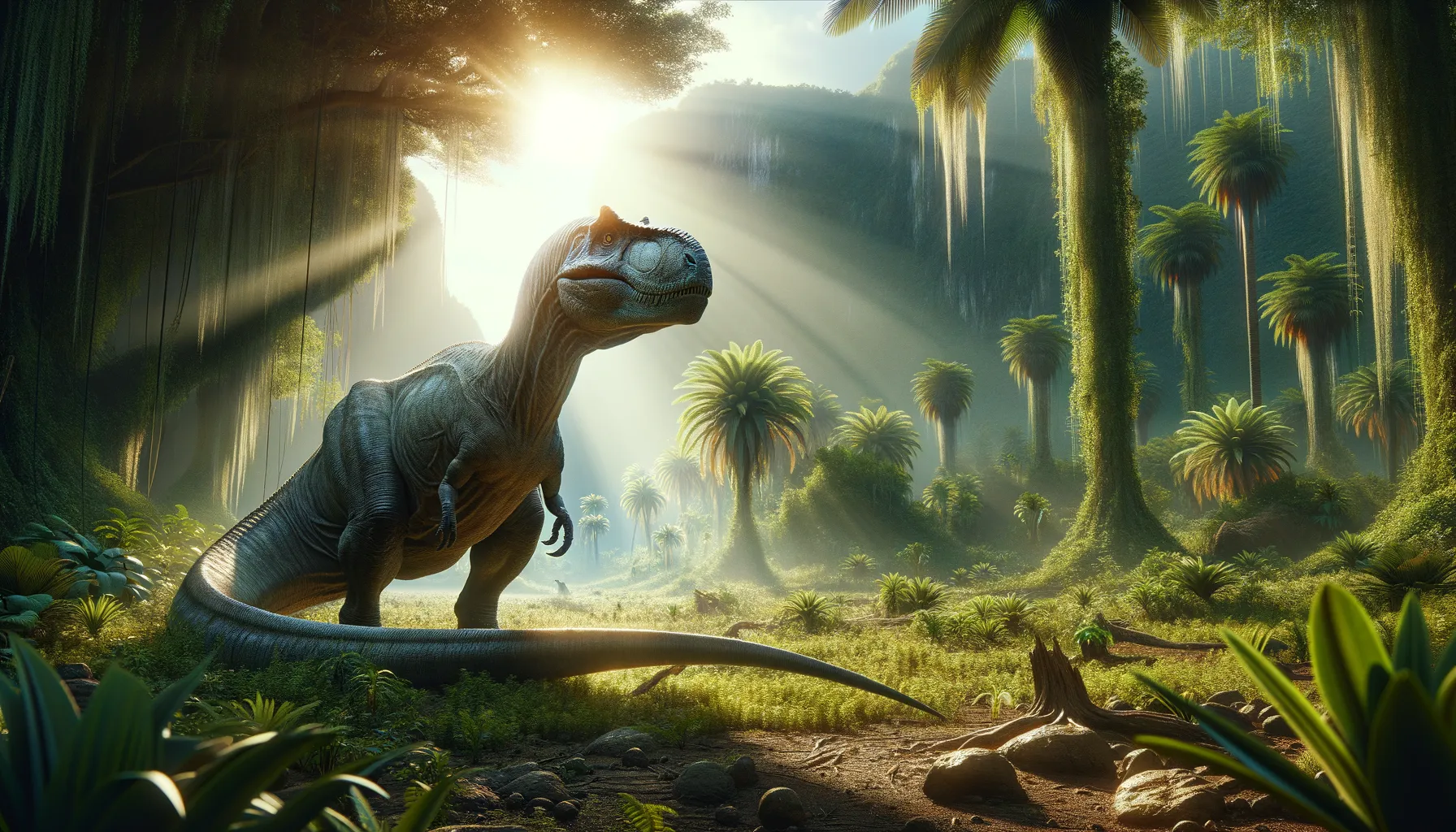
Pitekunsaurus
Titanic giant of the prehistoric realm.
Period
Cretaceous
Length
Measured roughly 20 meters in length.
Height
Stood about 8 meters tall.
Weight
Weighed approximately 15,000 kilograms.
Pitekunsaurus was a large herbivorous dinosaur from the Southern Hemisphere during the Late Cretaceous period. It belonged to the group known as titanosaurs, characterized by its enormous size, long neck, and substantial tail. Its fossils tell a tale of a magnificent era when these giants roamed the land. Their remains help scientists piece together aspects of life and climate during their time.
Diet
Pitekunsaurus was an herbivore, primarily consuming ferns, conifers, and other plant materials. Its long neck allowed it to reach higher vegetation, which helped in gathering food efficiently.
Hunting
As an herbivore, Pitekunsaurus did not hunt. Instead, it foraged for plants and leaves, using its size as protection against predators.
Environmental challenges
The Cretaceous period posed various challenges including fluctuating climates and competition for limited food resources. Large herbivores like Pitekunsaurus had to travel great distances to find adequate vegetation. Additionally, they had to be cautious of the large predators of the era which could pose a threat, especially to the young and sick individuals.
Speed
Pitekunsaurus likely moved slowly due to its massive size.
Lifespan
Estimated to live around 70 to 100 years.
First discovery
Discovered in Neuquén Province, Argentina in 2004.
Fun Facts
- Pitekunsaurus was a dinosaur that lived during the Late Cretaceous period, which was over 70 million years ago.
- This dinosaur was discovered in Argentina, a country known for its rich fossil sites.
- Pitekunsaurus was a herbivore, meaning it fed on plants, and likely spent much of its time munching on the lush vegetation of its era.
- Despite its long neck, Pitekunsaurus was not as large as some other sauropods, making it quite unique among its relatives.
- The name Pitekunsaurus means 'discovered' in the Mapuche language, reflecting the collaboration of local communities in its discovery.
- Pitekunsaurus was part of the titanosaur group, which were the last surviving long-necked dinosaurs before the mass extinction event.
- Its fossils provide vital clues about the diversity and evolution of dinosaurs in South America.
Growth and Development
Pitekunsaurus likely grew rapidly after hatching to deter predation, reaching colossal sizes as adults. This growth required significant resources, leading juveniles to consume large quantities of food. Adult titanosaurs continued to grow throughout their lives, a trait common among large reptiles.
Habitat
Pitekunsaurus lived in areas that were primarily flat and rich in vegetation. Fossil evidence suggests it thrived in semi-arid regions with seasonal rainfall. These areas provided ample plant life to sustain its large dietary needs. It likely moved between areas to follow vegetation growth patterns.
Interaction with other species
As a large herbivore, Pitekunsaurus likely coexisted with other herbivores, sharing resources such as food and water bodies. Additionally, it had to remain vigilant against predators like theropods, though its size offered substantial protection. Interactions with smaller species would have been minimal, as smaller creatures tended to avoid these giants.
Natural lifespan
Pitekunsaurus likely lived up to 100 years in natural conditions.
Reproduction
Pitekunsaurus likely laid eggs in clutches, as evidenced by titanosaur nesting sites. Breeding habits suggest that females might have returned to traditional nesting grounds each year. Parental care was minimal; hatchlings were left to fend for themselves soon after birth.
Social behaviour
Pitekunsaurus may have lived in herds, which provided safety in numbers from predators. Herding also facilitated the identification of food sources over vast landscapes. However, during the breeding season, these groups might have dispersed for nesting purposes.
Fossil locations
Fossils of Pitekunsaurus are primarily found in the Neuquén Basin of Argentina. These discoveries have provided valuable insights into the diversity of South American titanosaurs. The region's rich fossil beds continue to be an important site for paleontologists studying Cretaceous fauna.
